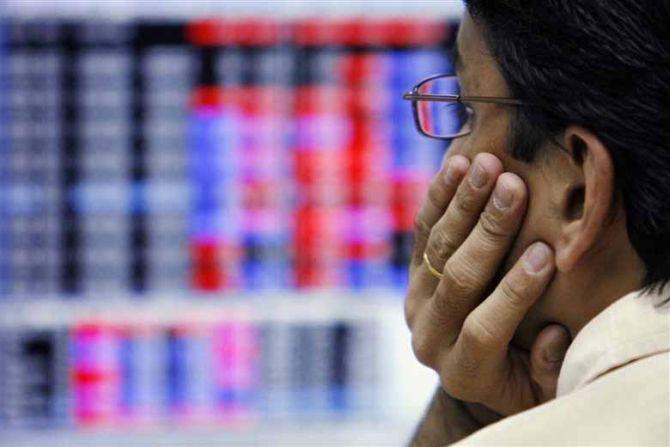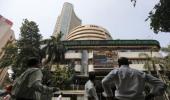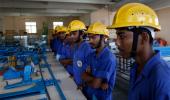2018 has been a disappointing and highly volatile year for equity investors.
Anup Roy and Samie Modak report.

It has been a rough ride for the financial markets in 2018; if ever there was an annus horribilis, this is it.
From currency and trade wars to crude oil prices, an entirely home-grown mess in the form of the Infrastructure Leasing & Financial Services (IL&FS); and as a new year dawns, jitters on the political front.
If all of this was not bad enough, you had a spat between North Block and Mint Road which saw in its wake, the resignation of governor Urjit Patel.
You name it, we had it.
Crude oil prices were the first slippery slope, which rose to $86 a barrel by September before falling to $53 a barrel which fed into bonds, the rupee and equities.
The Reserve Bank of India, after defending the currency till Rs 69 to the greenback, adopted a hands-off approach after a valiant attempt to stem its slide by raising key rates twice over in August.
It saw the rupee kiss a low of 74.4 on September 10 even as crude oil rose to $86 to the barrel.
Is the worst over for the rupee?
Well mull over this.
It gained 4.7% against after the six-month waiver granted by the US on Iran sanctions (supposed to set-in from November 4, 2018), but the trend has reversed.
The rupee has fallen by 3.4% in the first half of December 2018 (from Rs 69.6 on November 30 to Rs 71.9); it breached the Rs 72-mark on two instances in the week ended December 14.
It was a mixed year for bonds with the 10-year bond yield starting off at 7.3%.
The ongoing narrative had started in September 2017 as banks facing heavy mark-to-market losses stayed on the sidelines in the first quarter of the current calendar.
The benchmark yield crossed 8% in June; fell, and rose again to 8.2% by September on fears of a yawning fiscal deficit and rising oil prices.
Bond prices have rallied towards the close of the year riding on the back of the massive liquidity operation infusion through bond purchases during the year of nearly Rs 2.5 trillion.
The first half borrowing programme for the fiscal was remarkably lighter as the Centre decided to borrow only Rs 2.88 trillion, or 47.5% of the targeted Rs 6 trillion for the full fiscal, against the usual practice of borrowing 60% to 65% in the first half itself.
The blowout at IL&FS spoilt the plot for non-banking finance companies; it was back to the drawing board.
But Keki Mistry, vice-chairman and CEO at HDFC Ltd, feels NBFCs are here to stay.
"A lot of them offer mono-line products, which means they specialise in lending to a particular sector... the recent averseness to credit will be short-lived," says Mistry, adding, "Such situations have happened in the past and once the panic settles down, things should be back to normal."

Equitable justice of the same kind...
On the equities side, the tale was no different.
The year started on a good note with the benchmark indices rallying 5% in January, but it was mostly downhill since at least for the broader market.
The large-cap focused Sensex and Nifty managed to hold their ground thanks to a sharp rally in heavyweights Reliance Industries (up 20% to date) and Tata Consultancy Services (up 40% to date).

An improvement in the global investor sentiment saw the benchmark indices climb to new all-time highs in August.
However, the subsequent two months turned out to be rough for investors.
In September and October, the Sensex fell as much as 15% on worries that macro-economic conditions were deteriorating amid a plunge in the rupee and spike in Brent crude prices.
Globally, too, investor sentiment towards the emerging markets hit a nadir with the US dollar gaining strength after the yield on the 10-year treasury hit 3.24% mid-August.
As the treasury pierced the 3% mark, EMs started witnessing huge capital outflows.
For the two months ending October, domestic debt and equity markets saw outflows of $3 billion and $5 billion, respectively, weighing on asset prices.
On a year-to-date, basis the Sensex is up around 5%.
During the year, it rallied as much as 14% and then declined nearly 15% from its highs.
Last year, it had gained 28% on a secular uptick.
2018 has been a disappointing and highly volatile year for equity investors.
Here's hoping that 2019 will being in better tidings.











